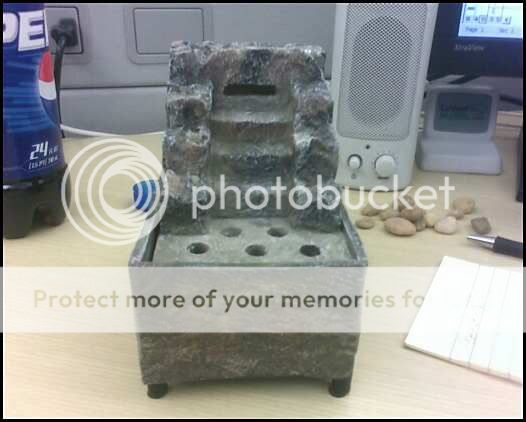LaserFreak
Enlightened
- Joined
- Jun 9, 2005
- Messages
- 367
I need help with a project I've taken up. Here we have a small desktop water fountain, that sucks up batteries as quickly as it pumps water. The batteries die within two days of keeping it on 8 hours straight each day, and I've decided it's just not worth switching out batteries that often, but I would still like to use it.
Now of course, I could easily go out and spend $30-$50 for a fountain with an AC adapter included, but I figure it's just easier, and cheaper, to modify this one to accept an AC adapter.
I'm pretty sure I can figure out how to wire the electronics and how and where to mount the adapter plug (typically the male receiving end), but I'm not sure how much voltage and amperage to supply it with. I'm afraid of overdriving the motor, but on the other hand, it would be nice if the motor could pump just a little more volume. The fountain takes 2 AA batteries at 1.5 volts each. So am I right in thinking it needs 3 volts to operate? If so, how many amps should it need?
I'm sure one of you engineers can easily figure this one out...........I've included pics below to show you exactly what I'm working with.


Now of course, I could easily go out and spend $30-$50 for a fountain with an AC adapter included, but I figure it's just easier, and cheaper, to modify this one to accept an AC adapter.
I'm pretty sure I can figure out how to wire the electronics and how and where to mount the adapter plug (typically the male receiving end), but I'm not sure how much voltage and amperage to supply it with. I'm afraid of overdriving the motor, but on the other hand, it would be nice if the motor could pump just a little more volume. The fountain takes 2 AA batteries at 1.5 volts each. So am I right in thinking it needs 3 volts to operate? If so, how many amps should it need?
I'm sure one of you engineers can easily figure this one out...........I've included pics below to show you exactly what I'm working with.



